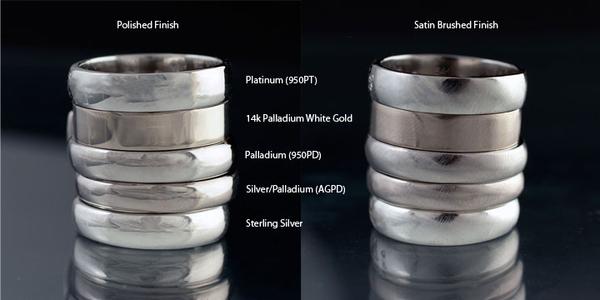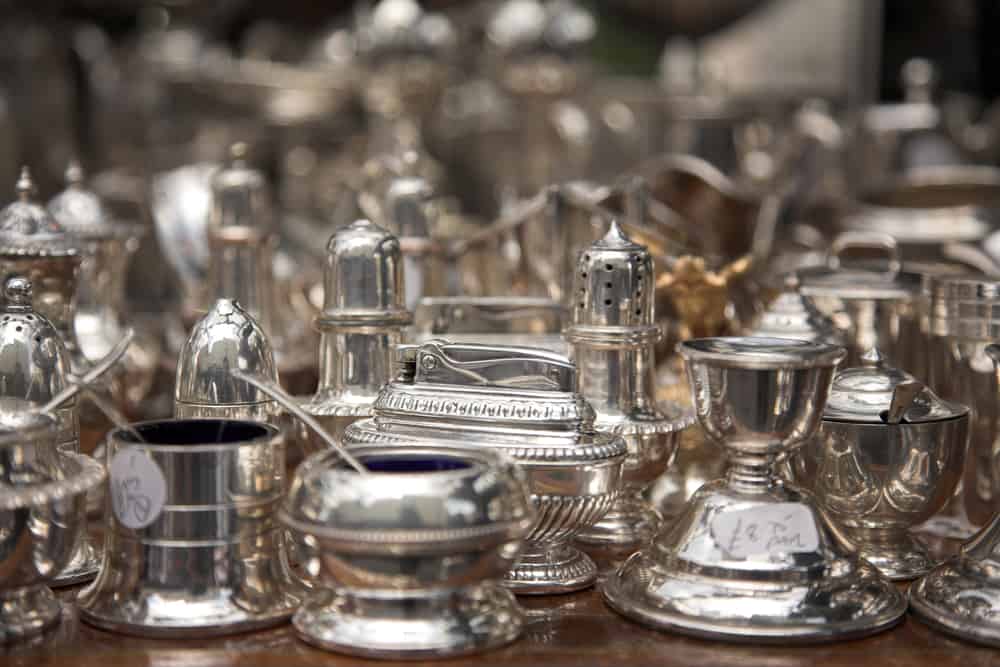Table of Contents
As one of the most popular metals used for investments and jewelry, silver is always a winner – but if you don’t know the right grade for your purposes, you could end up getting the wrong type of silver for your goals. Here’s what you need to know about the ongoing debate of Sterling Silver vs Fine Silver.
*This post may contain affiliate links. As an Amazon Associate we earn from qualifying purchases.
What’s The Difference, Anyway?
While both of these are often referred to simply as ‘silver’, they have very different applications and values.
Fine Silver is 99.9% pure silver (or better). This is the most common level of purity used for silver bars and bullion – indeed, many of the better markets refuse to accept anything less. (The next major level of purity – 99.99% pure – is mostly used for special commemorative coins by the Royal Canadian Mint.)
This purity of silver is extremely soft – too soft to be worn or used in decorations. As such, it’s extremely rare to see this level of purity outside of bullion, and if you do, there’s a good chance it’s fake.

Fine silver does not tarnish, making it easy to store and maintain for long periods of time.
Sterling Silver is 92.5% pure silver and 7.5% other metal, usually copper. This purity is often used for non-bullion products, such as goblets and jewelry, because the mix of other metals gives it structural strength and longevity. It’s usually marked as something like “925 silver”.
Any piece with less than 92.5% pure silver is not considered Sterling Silver by U.S. standards, but the designation may be used elsewhere (especially in Europe). This is one of the reasons it’s important to check the purity stamped on the piece, rather than the name given to it.
Unlike fine silver, sterling silver visibly tarnishes over time and needs regular care to maintain its appearance. Maintenance isn’t difficult – there are plenty of cleaning products available – but it does mean more interaction with the piece and can lead to slightly diminished value.
Most places that buy silver are quite willing to accept Sterling Silver pieces. They may not sell as bullion, but there’s a market for pieces of this type, preferably in attractive designs (since, unlike bullion, the design does affect price here).
Argentium Sterling Silver is a rare variant of Sterling Silver that uses a copper/germanium mix and is usually 93% silver. Unlike normal sterling silver, it does not tarnish. This makes it the ideal choice for display pieces and wearable items, but you may have to custom-order them.
Other Types Of Silver
You now know the traits of the two most popular types of silver – but fine and sterling are not the only grades or methods of use you may come across. Here are some other types of silver you may see in jewelry pieces.
Coin Silver
This alloy is 90% silver and 10% copper. Despite the name, it isn’t used to make coins – rather, it gets its name because it was refined from scrap coins in the past. (Silver is no longer used for most monetary coins.)
Coin Silver is most often found in older items, especially collectibles and antiques. While these may not have the same value as fine silver, certificates of authenticity and interesting designs can make them more valuable than their base metal content. Since there’s a higher non-silver content, Coin Silver also tends to be noticeably more durable than Sterling Silver.
Silver-Filled
Silver-Filled products tend to be made when prices are especially high and buying power is low, such as the Great Recession. Products made this way have up to 10% Sterling Silver in them, all of which is on the surface. The interior is usually made of brass, and the silver is fused to the core through a process involving heat and pressure.
Most notably, Silver-Filled products have a thicker outer layer than Silver Plated (see below), so it can be hard to check their purity with a simple scratch test. They look just like sterling silver from the outside, so you’ll need to use another test – preferably a weight test – to check for this.

Silver Plated
Silver Plated products have an extremely thin layer of silver on the outside, usually just thick enough to hide the base metal. The actual amount of silver in the piece is usually well under 1%, making them affordable on almost any budget.
Notably, however, most Silver-Plated pieces tarnish and eventually rub off. It’s rare to see any sort of quality or purity stamp on this sort of silver – instead, you’re more likely to find a hallmark or the logo of the manufacturer.
Nickel Silver
Nickel Silver is something of a bad name because it has no actual silver in it. Instead, it’s a base metal alloy mixing copper and nickel (and, occasionally, zinc) to create an affordable silver-colored material. Like Fine Silver, Nickel Silver is relatively soft – this makes it a popular choice as a ‘practice’ metal for students, as well as something that can be used in costume jewelry without rubbing off.
Some people are allergic to nickel, so it should always be clearly identified as such.
Tribal Silver
Much like Nickel Silver, so-called “Tribal” silver contains no actual silver. Instead, they’re alloys of various metals in various amounts that all look like silver but may be dangerous to touch with your bare hands thanks to the presence of metals like lead.
Tribal Silver is best purchased for appearance, rather than value. Many pieces made of this material are quite attractive in their own right, so they have value for the design instead of their metal content.
(Tribal Silver goes by many other names. ‘Tibetan’ silver is one of the most common. If you ever hear a geographic name, it’s probably Tribal Silver.)
Mystery Silver
The last type of product you may see is simply sold as ‘silver’. Quality products have marks that clearly identify their purity and content. If something is only sold as ‘silver’, with no further information, chances are it has little or no actual silver in it.
Artists and mints are legally required to stamp, tag, or otherwise identify the purity of a given piece. There is no reason to ever trust the claims of someone selling Mystery Silver.
How Do People Test For Purity?
There are many methods you can use to check the purity of silver you buy. The best method is to buy from a reputable source, such as one of the major international markets. These markets have extensive internal testing methods and are quick to strike down any seller who lies.
If you’re not buying from a market, you’ll have to do a few tests yourself. Here are your options.
X-Ray Testing

This is a non-destructive method that uses x-rays to analyze the content of a given piece. Unfortunately, it’s not as accurate as many people would like – some types of layering and plating can fool it, though it’s accurate on most items.
Assay Testing
This is the most accurate method of testing an item’s purity. At least 0.5 grams of the item are melted down, then analyzed by a lab to determine the exact ratio of all metals. Like X-Ray Testing, it’s slow – and worse, it is a little destructive to the piece. You’ll have to decide for yourself if Assay Testing is worth it in your particular case.
Size and Weight Testing
This is the ideal test in most situations. Silver is a dense, heavy metal – so if there’s too much filler, the piece will be either too light or too large for what it claims. Tools to help measure and weigh coins are widely available.
Sound Test
Sometimes referred to as the ‘Ring of Truth’, gold and silver have a distinctive chiming sound when struck. Pieces with too much base metal tend to have short, dull sounds in comparison, so a keen ear can quickly tell if a coin is in the right purity range.
Thermal Conductivity Test
Silver is extremely good at transferring heat – more so than most metals, in fact. If you’re testing fine silver, try placing an ice cube on top of the piece. If it’s pure, the ice will rapidly start to melt on the bottom as the silver transfers heat. This is less effective on Sterling Silver because the other metals reduce conductivity.
Acid Tests
Acid Tests are an excellent way to determine if something is less than 92.5% silver. The acid can either be dropped directly onto a piece, or a piece can be cut off and dropped in the acid to see if it changes color.
Acid tests have little effect on pure pieces (which are priced by the value of the metal they contain, not their appearance). However, these tests can significantly – and permanently – discolor impure pieces, further reducing their value.

